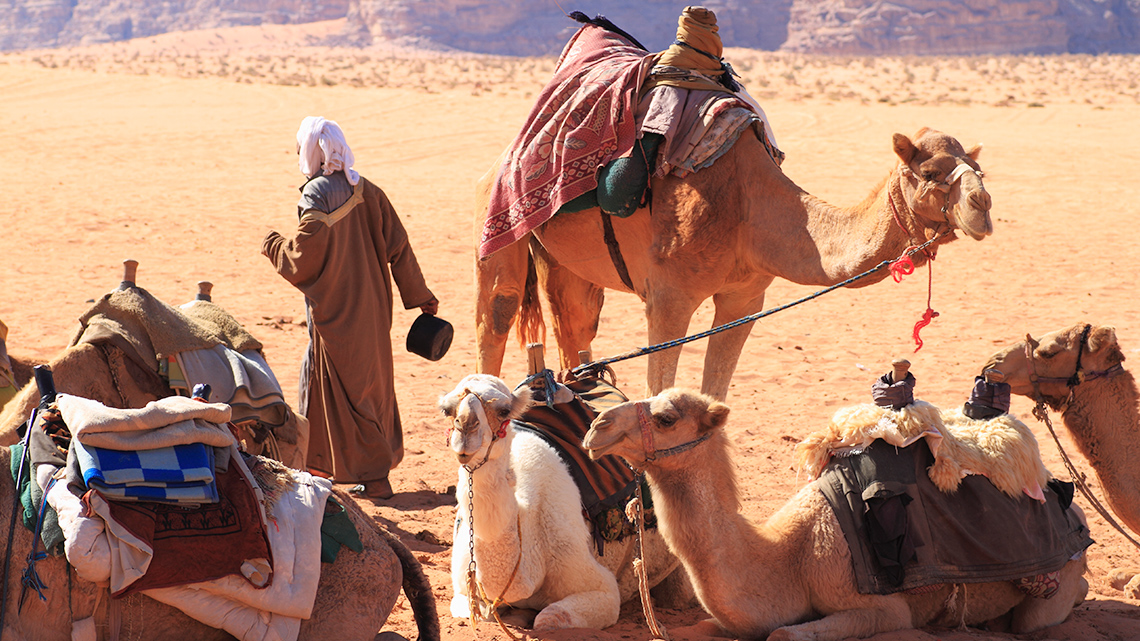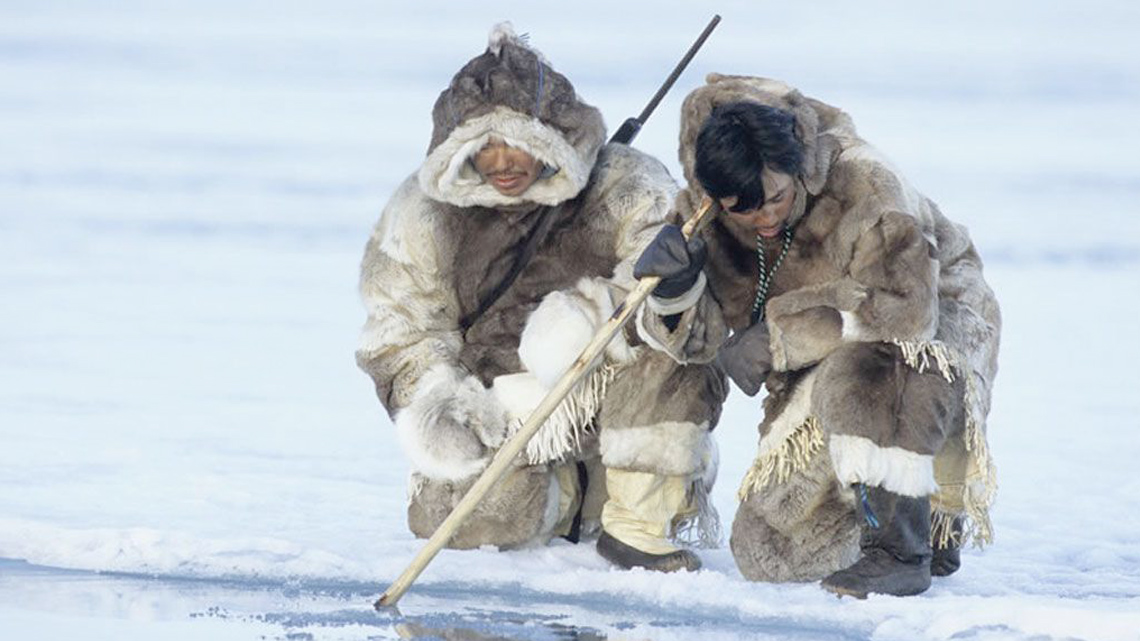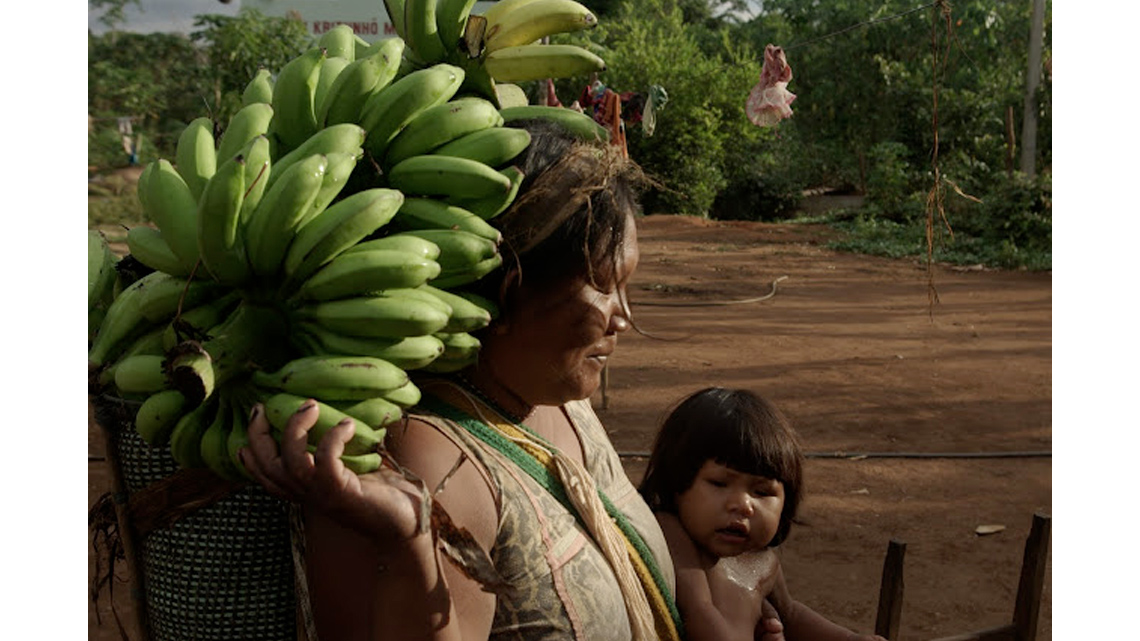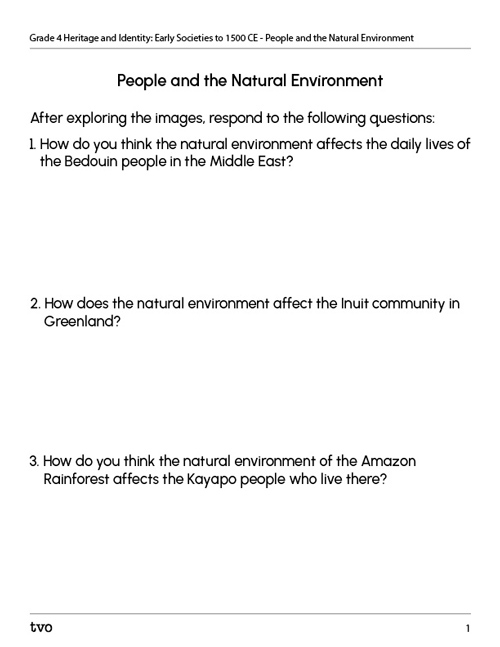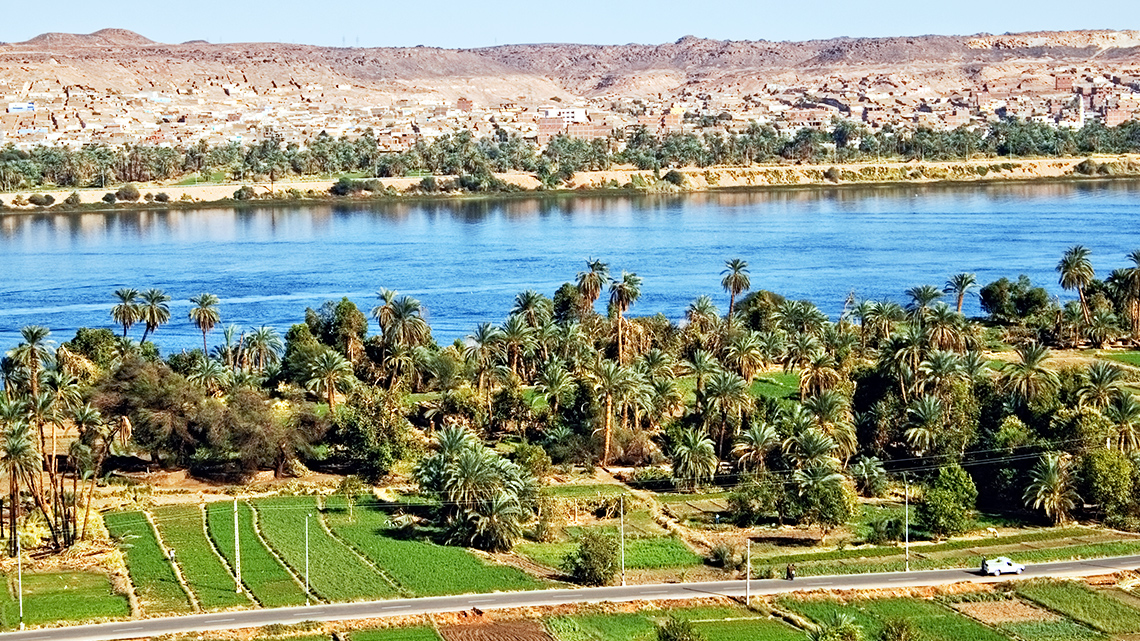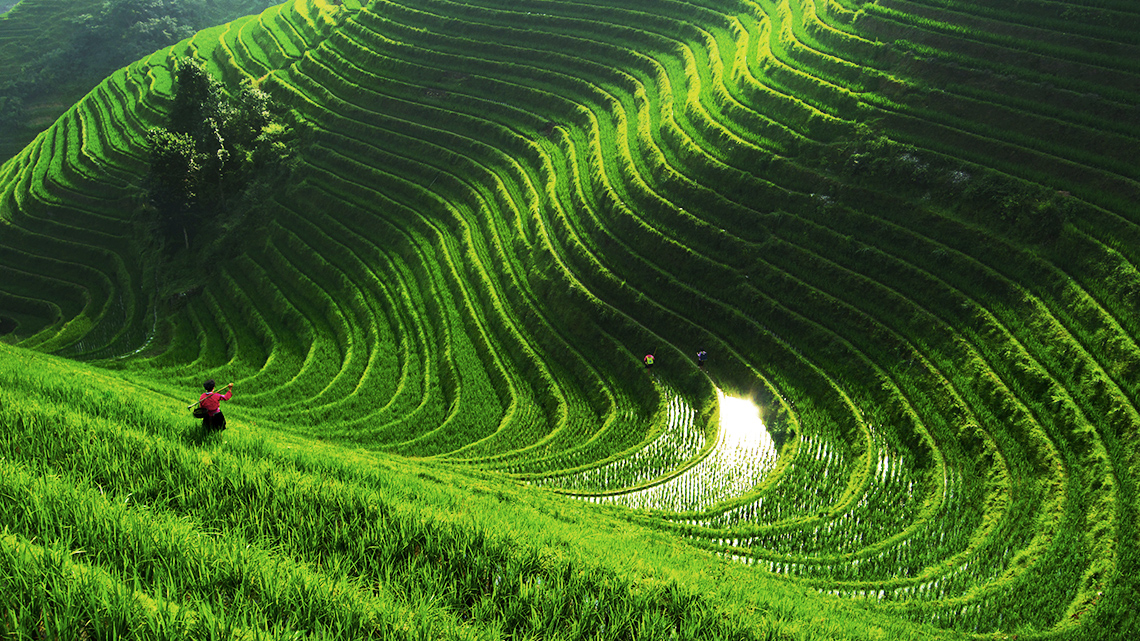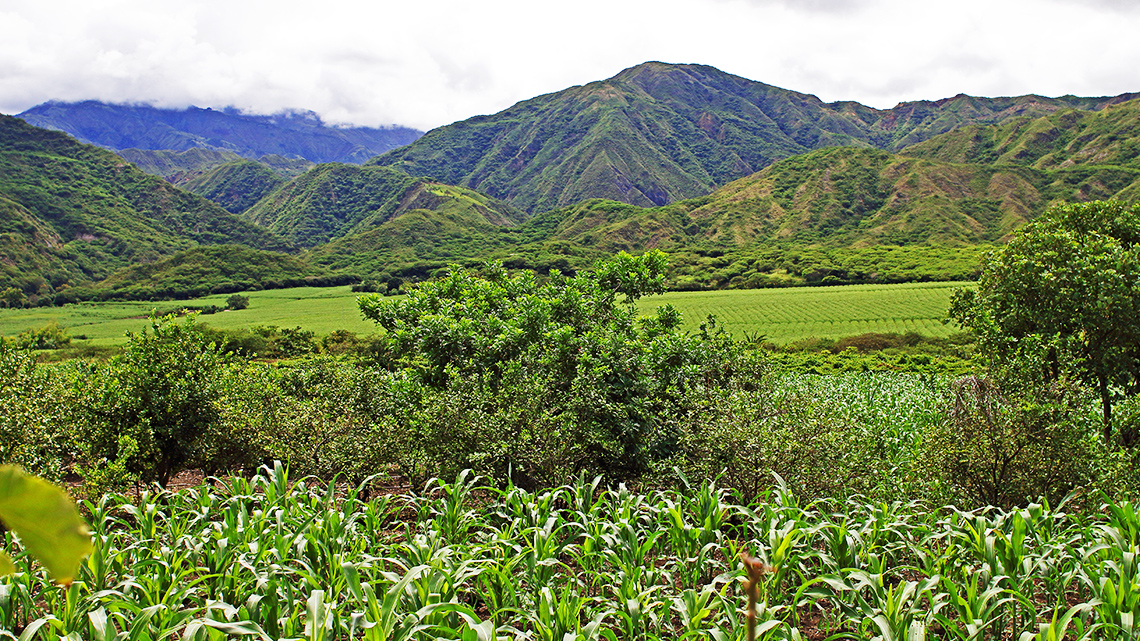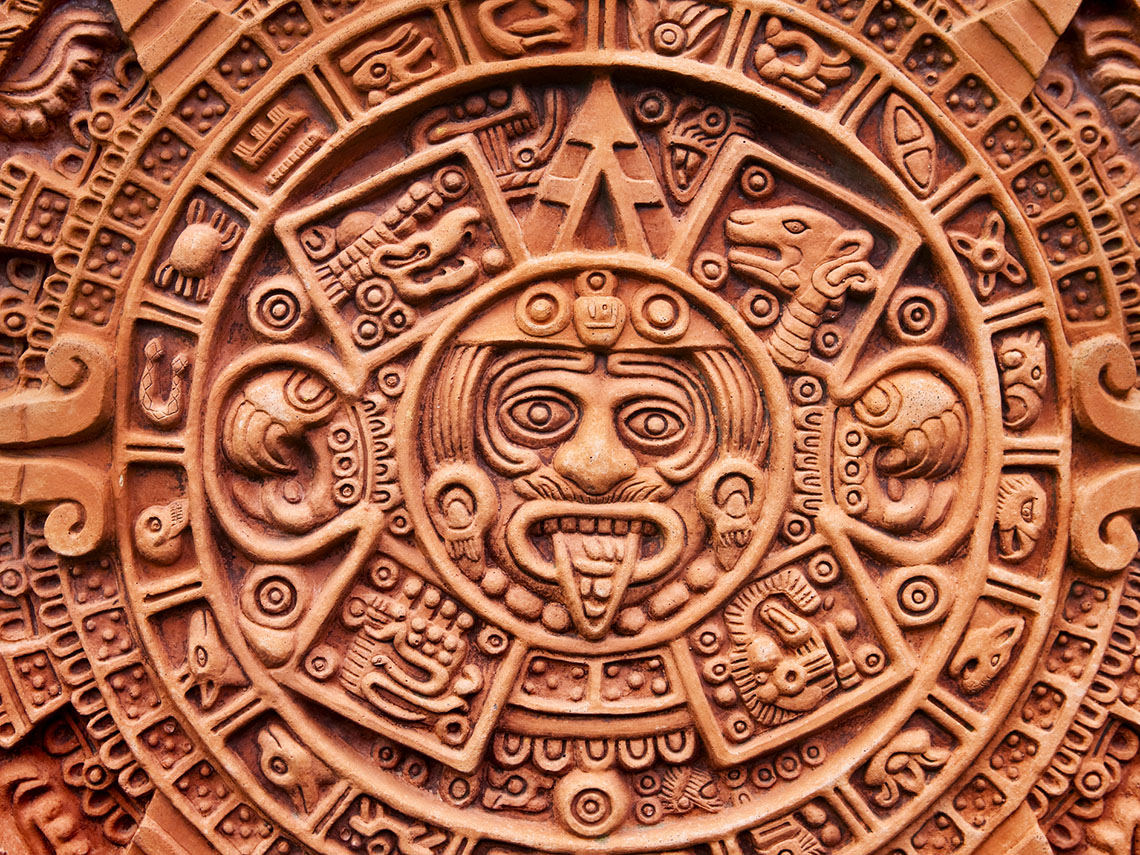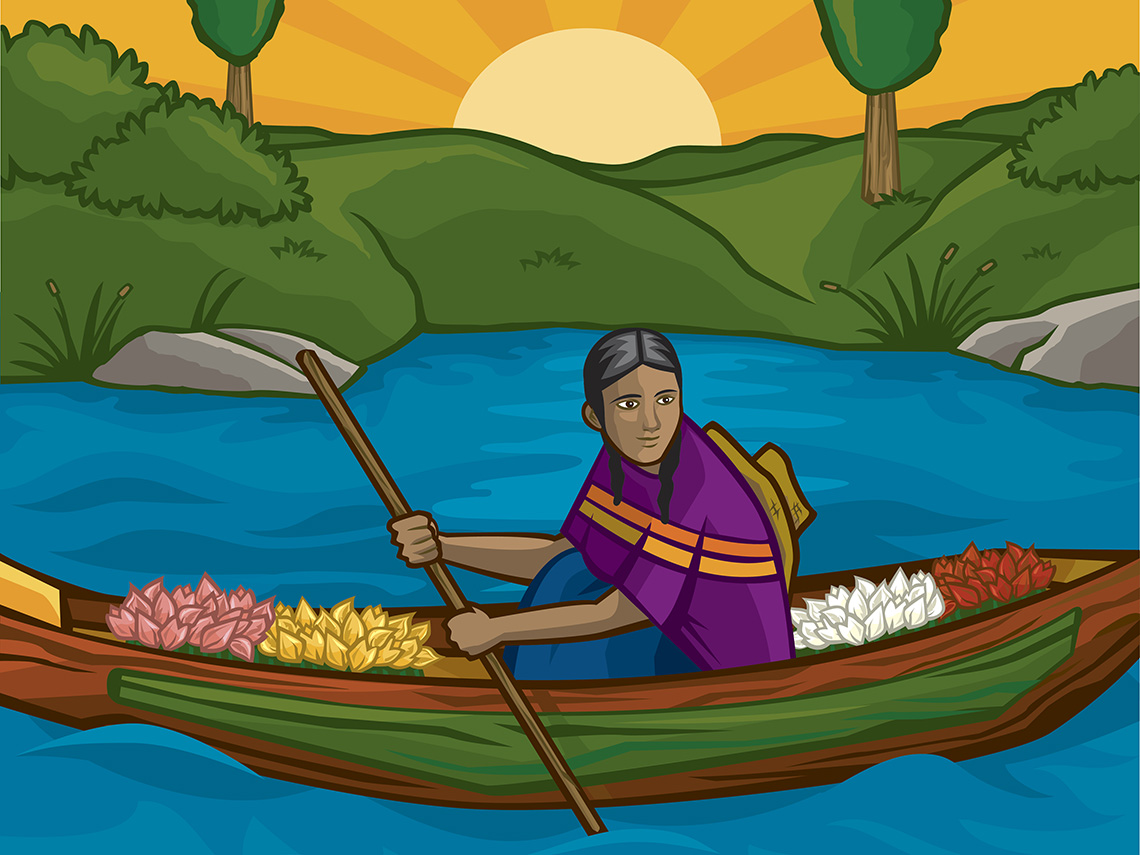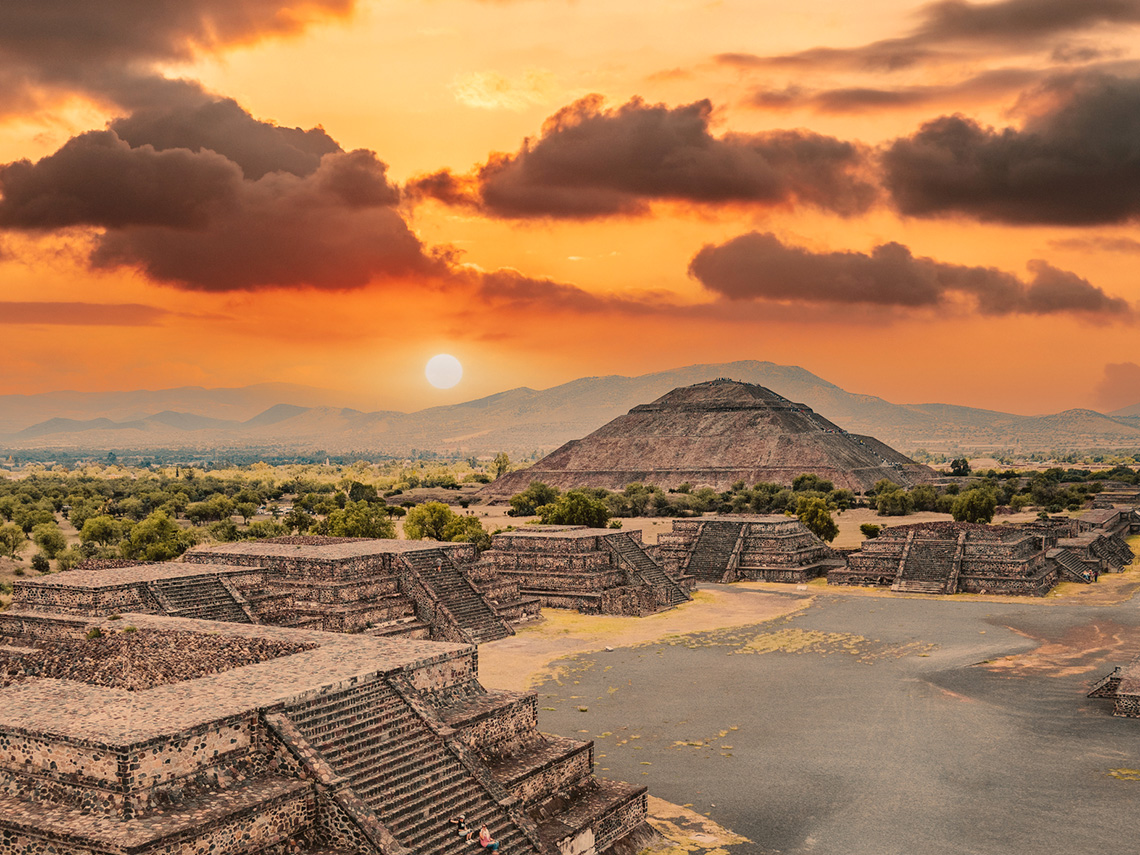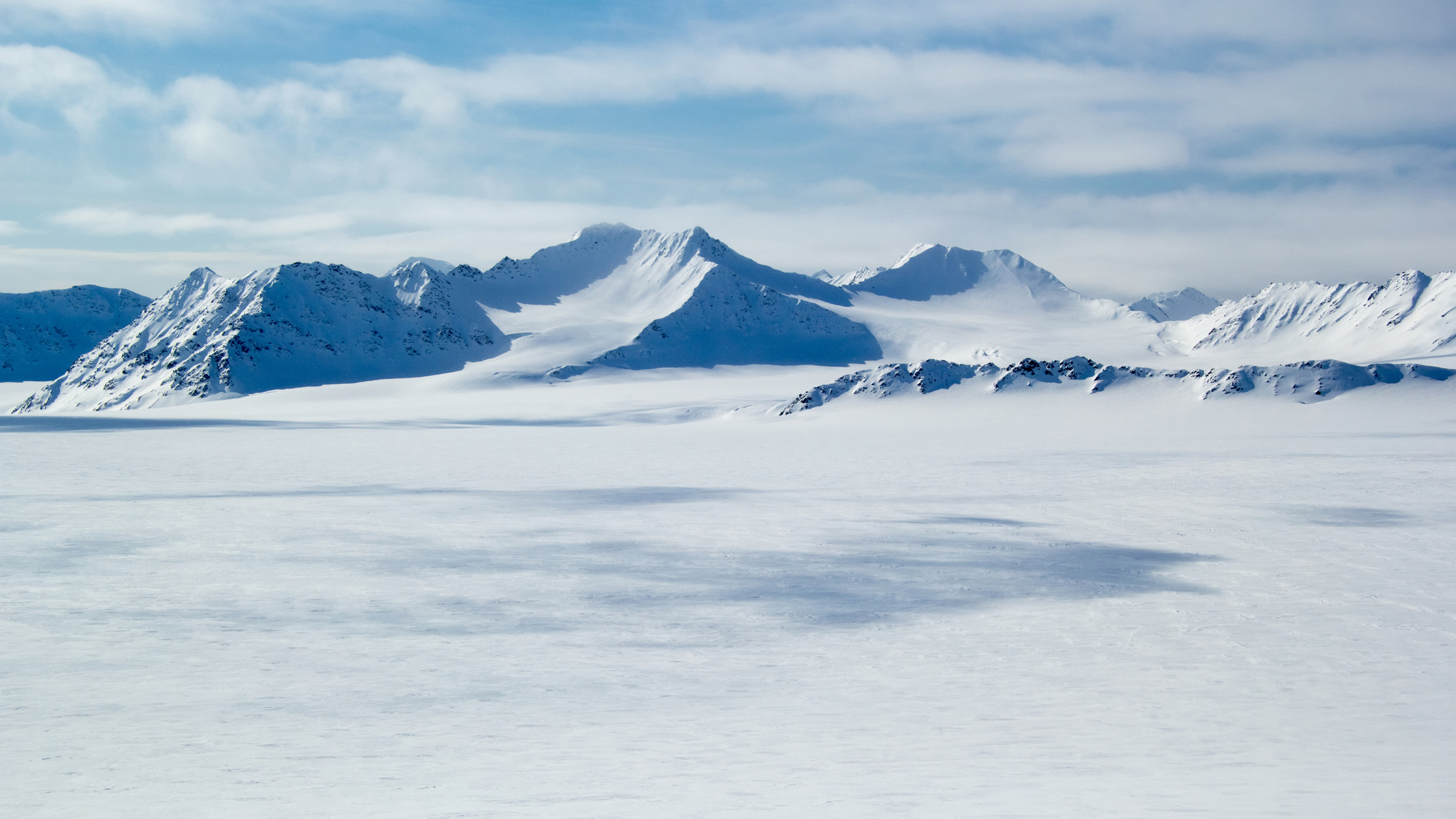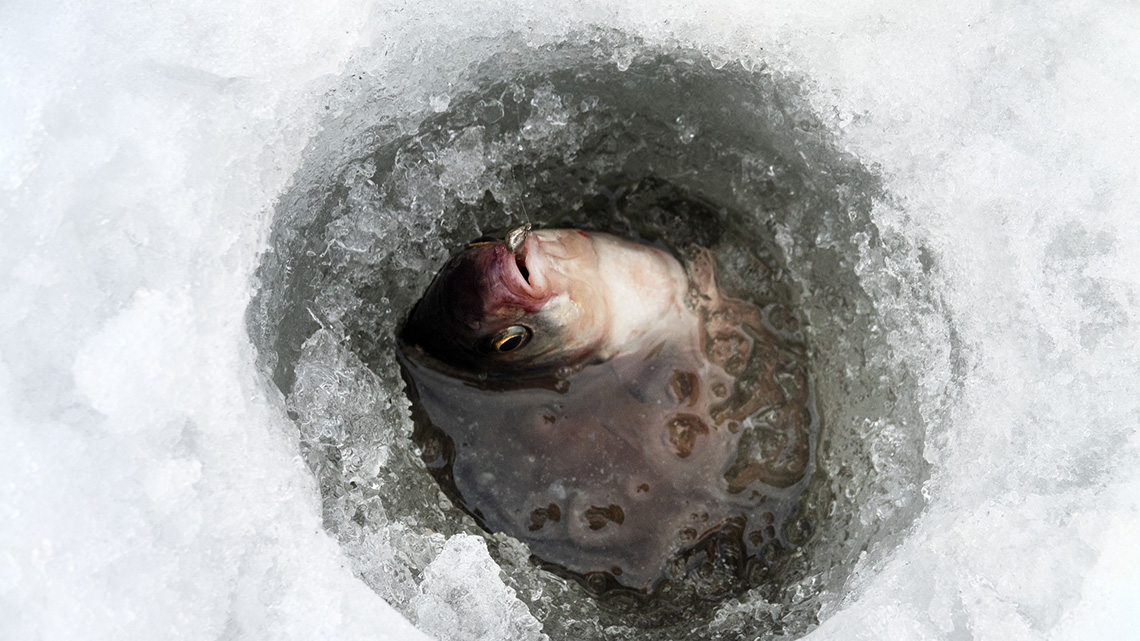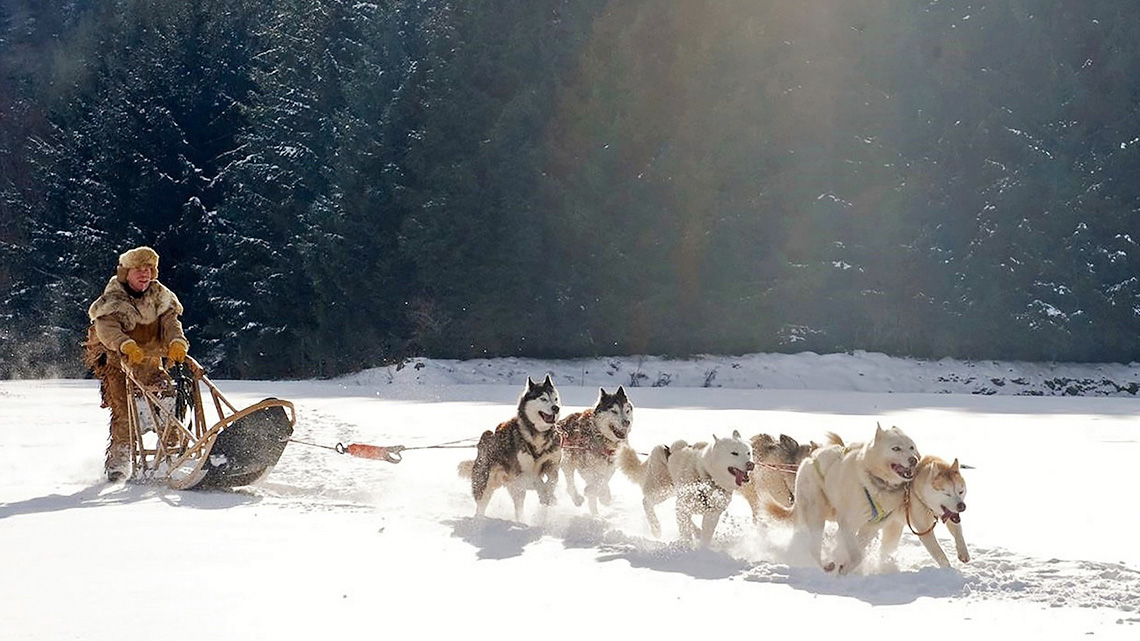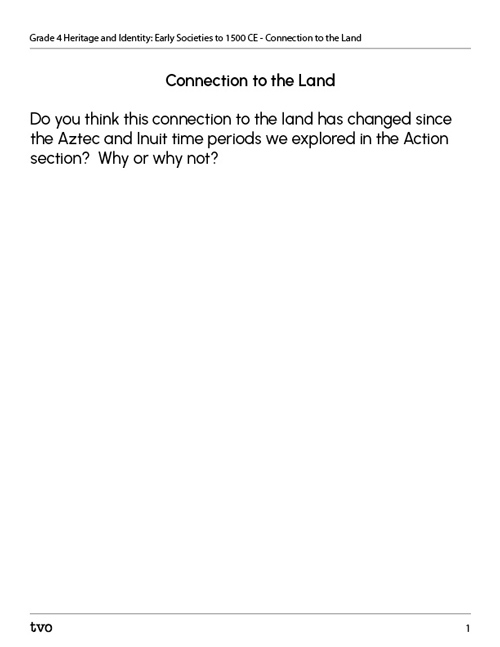Minds On
Natural environment
Let’s consider how the natural environment affects human life.
The following are three Indigenous societies from around the world who have lived and continue to live in very different climates and environments.
After exploring the images, respond to the following questions:
- How do you think the natural environment affects the daily lives of the Bedouin peoples in the Middle East?
- How does the natural environment affect the Inuit community in Greenland?
- How do you think the natural environment of the Amazon Rainforest affects the Kayapo peoples who live there?
Press 'Hint' to access an additional prompt to guide your thinking.
Complete the People and the Natural Environment activity in your notebook, in the following fillable and printable document, or record your ideas orally, digitally, or in a method of your choice.
Action
The environment
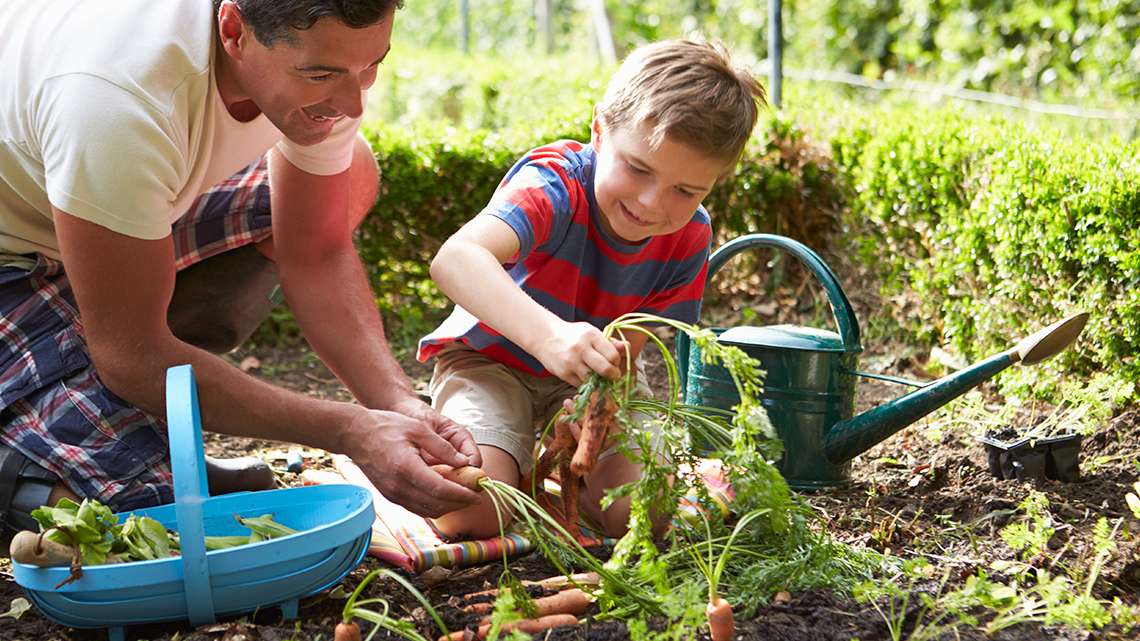
The natural environment is really important for people. It affects how they farm, trade, and travel. In the past, people learned how to use things in nature to help their communities grow and develop.
Agriculture
One of the most important developments was agriculture.

Press ‘Let’s Check’ to access a definition of agriculture.
Student Tips
Did you know?
To signify historical eras, we use CE (Common Era) and BCE (Before Common Era).
BCE is the non-religious alternative to the term BC that stands for “before Christ.”
A long time ago, around 8000 BCE, certain countries began discovering how to live off the land in ways they didn’t before, and it was called the “agricultural revolution.” During this time, they learned a lot of new things, such as:
- New and better ways to grow lots of food
- New techniques to grow more crops (food) quickly
- New ways to grow lots of different foods in one place, such as grain, barley, rice, and corn
Different places in the world used the environment they were in to grow different foods. Explore the carousel of images and descriptions to learn about where the Egyptians, Chinese, and Incan grew food.
Pause and Reflect
Pause and reflect
As you consider your own community and local environment, respond to the following questions orally, digitally, in print, or in another method of your choice.
- Do you live near a river, lake, forest, or protected land?
- What is the environment like in your community?
- How do you connect with and interact with the environment on a daily basis?
Aztec communities
Aztec society formed around the beginning of the thirteenth century and became a powerful empire until the sixteenth century, in what is now Mexico.
At its strongest, this society stretched from Mexico to Honduras and to Nicaragua in Central America.
Let’s examine the sixteenth century map of the Aztec capital city, Tenochtitlan:
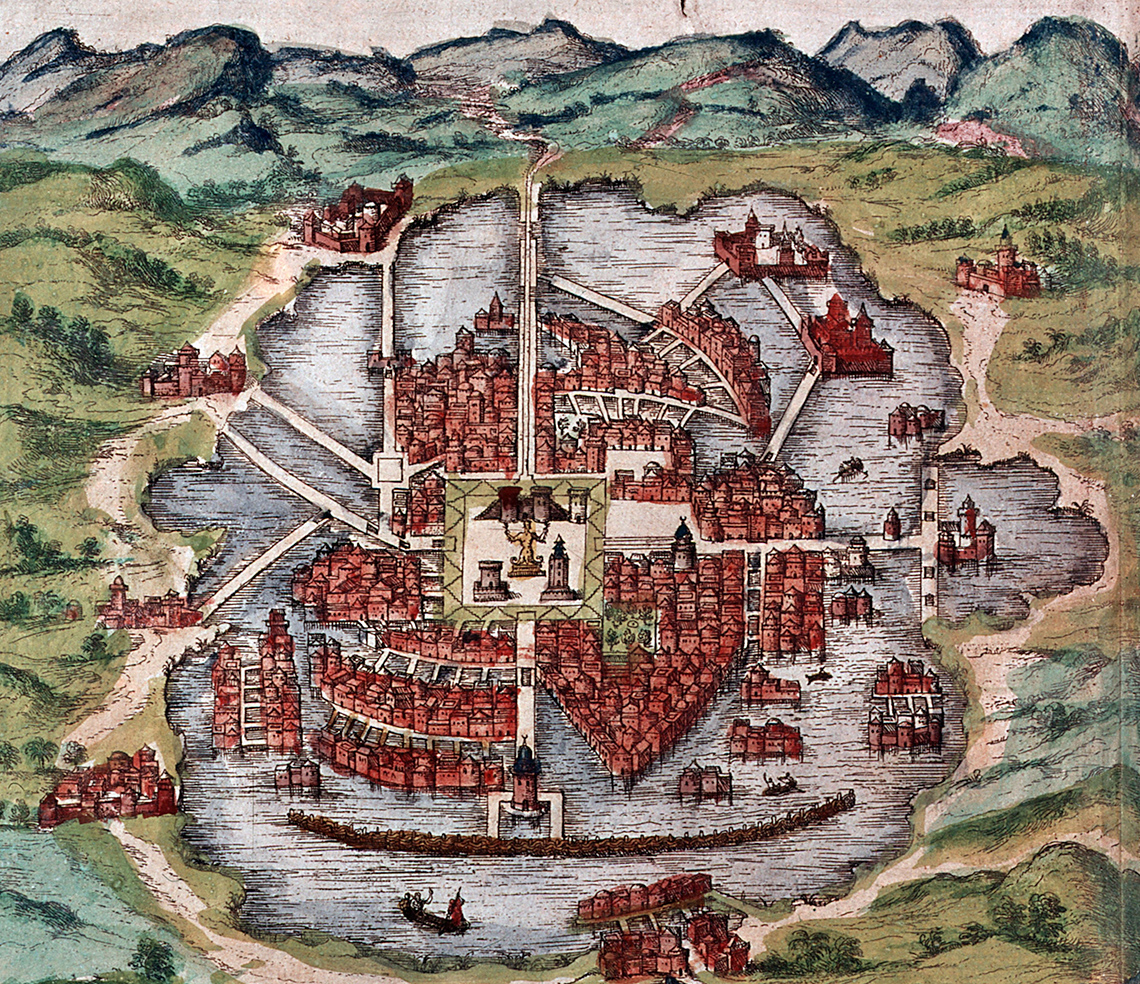
Map of Mexico City in the 16th century, also known as the Aztec capital city, Tenochtitlan. The city was an island surrounded by water with roads leading to the nearby land and mountainous areas. People travelled by canoe around the city.
Press ’Let’s check!’ to access the observations from the map of Tenochtitlan.
What do you notice?
- Tenochtitlan was built on Lake Texcoco and featured a series of waterways between its buildings.
- Travel by canoe was common throughout the city.
For each sentence, select the missing word.
Aztecs and the environment
Let’s explore some areas of Aztec society and consider their relationship with the environment.
Pause and Reflect
Pause and reflect
Based on what you’ve explored so far, what is one way that the Aztec community interacted with their land? Record your ideas orally, digitally, in print, or in another method of your choice.
Press ‘Answer’ to access ways in which the Aztec community interacted with the land.
The Aztec community interacted with the land in many different ways, such as:
- Using natural resources (copper, gold, clay, rock) to make everyday objects
- Using waterways to travel around
- Using land and waterways to grow crops
Inuit communities
Inuit societies were founded from at least 1000 CE in the northern regions of Canada including the Northwest Territories, Yukon, Nunavut, Quebec, and Newfoundland and Labrador.
The following map highlights these regions of Canada:
As we work towards Truth and Reconciliation, information about lands and territories is constantly being updated. This map was created using information available as of July 2021 from the Inuit Taripriit Kanatami.

Map of the Inuit Nunangat with parts of northern territories and provinces highlighted in Canada. Northern Yukon and the Northwest Territories are known as Inuvialuit. Nunavut is Nunavut. Quebec’s north western is known as Nunavik. Northern Newfoundland and Labrador is known as Nunatsiavut.
A long time ago, the Inuit relatives lived near the shores of Bering Strait. Then they travelled their homelands and to places now commonly referred to as northern Alaska, Greenland, and Canada, revisiting the same spots each year.
The relatives of the Inuit were called the “Sivullirmiut,” or the “First People,” and they started to choose certain places to hunt and live. They liked these places so much, they kept going back to them each year. Even today, people still use these special places for activities.
The Inuit people call their homelands the Inuit Nunangat which means the land, water, and ice in the Arctic region. In the past, the Inuit were “semi-nomadic.” This means that they moved around to different places depending on the time of year. It is important to remember the Inuit still participate in these activities today.
Let’s explore how the Inuit interacted with the environment in the following images and descriptions.
Inuit and the environment
Let’s explore some areas of early Inuit society and consider their relationship with the environment.
Press 'Explore' to explore more about Inuit and the environment.
Let’s think!
Explain one way that the Inuit connected with or interacted with their land? Record your ideas orally, digitally, in print, or in another method of your choice.
Press ‘Answer’ to access how Inuit interacted with the land.
The Inuit people interacted with the land in many different ways, such as:
- Using the land to live on
- Using the land to hunt and fish
- Using natural resources like water, fish, and wildlife
- Travelling through the snow covered lands and waters
Explore the following statements and sort them into “Aztec” or “Inuit” based on which community it describes.
Pause and Reflect
Pause and reflect
After exploring both ancient societies, reflect and respond to the following questions:
- Could the location of either of these societies in the world affect their relationship to the environment? If so, how?
- Could the climate of their environment have an effect on the society?
- How did the climate and physical features of their environment affect their food production?
- What was one element of each society that really stood out for you? Why?
- How could you compare your connection to the land to one of these early societies? Is it similar? Why or why not?
Record your ideas orally, digitally, in print or in a method of your choice.
Consolidation
Your community

Now that you have considered the role of the environment in Aztec and Inuit communities with respect to the climate, travel, and other factors, let’s focus on the role of the environment in your community.
Press ‘Example’ to access examples for the types of environments around you.
- If you live near a lake, you may note that the environment has lakes, rivers, and wetlands.
- If you live near mountains, you can note it under the environment heading.
- If you live near farmland, or protected land such as a forest or a provincial park, this can be noted as well.
Next, let’s record the activities affected by the environment in your community. Include as many activities you can think of that are affected by the environment.
Press ‘Example’ to access examples of activities and how they are affected by the environment.
For example:
- If you live near a lake, your activities may include swimming in the summer or skating in the winter.
- If you live near protected land such as a forest or a Provincial Park, your activities could include hiking, dog walking or playing sports.
Complete the Exploring My Community Activity in your notebook, in the following fillable and printable documents, or in a method of your choice.
|
Environment |
Activities |
|---|---|
Press the ‘Activity’ button to access the Exploring My Community Activity.
Connection to the land
Complete the Connection to the Land activity in your notebook or using the following fillable and printable document. You can also use a method of your choice.
Do you think this connection to the land has changed since the Aztec and Inuit time periods we explored in the Action section? Why or why not?
Reflection
As you read through these descriptions, which sentence best describes how you are feeling about your understanding of this learning activity? Press the button that is beside this sentence.
I feel...
Now, record your ideas using a voice recorder, speech-to-text, or writing tool.
